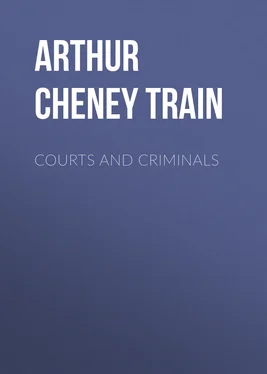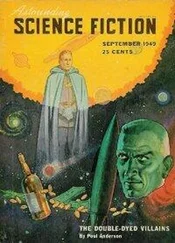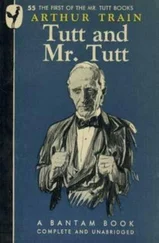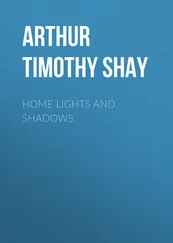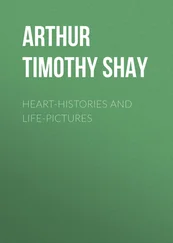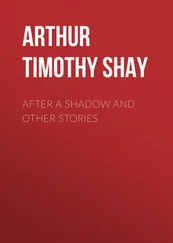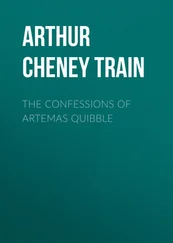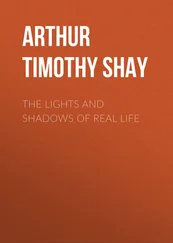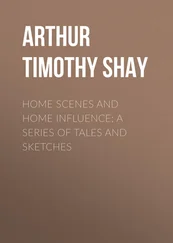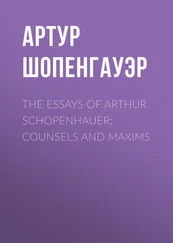Arthur Train - Courts and Criminals
Здесь есть возможность читать онлайн «Arthur Train - Courts and Criminals» — ознакомительный отрывок электронной книги совершенно бесплатно, а после прочтения отрывка купить полную версию. В некоторых случаях можно слушать аудио, скачать через торрент в формате fb2 и присутствует краткое содержание. Жанр: foreign_antique, Юриспруденция, Юриспруденция, на английском языке. Описание произведения, (предисловие) а так же отзывы посетителей доступны на портале библиотеки ЛибКат.
- Название:Courts and Criminals
- Автор:
- Жанр:
- Год:неизвестен
- ISBN:нет данных
- Рейтинг книги:4 / 5. Голосов: 1
-
Избранное:Добавить в избранное
- Отзывы:
-
Ваша оценка:
- 80
- 1
- 2
- 3
- 4
- 5
Courts and Criminals: краткое содержание, описание и аннотация
Предлагаем к чтению аннотацию, описание, краткое содержание или предисловие (зависит от того, что написал сам автор книги «Courts and Criminals»). Если вы не нашли необходимую информацию о книге — напишите в комментариях, мы постараемся отыскать её.
Courts and Criminals — читать онлайн ознакомительный отрывок
Ниже представлен текст книги, разбитый по страницам. Система сохранения места последней прочитанной страницы, позволяет с удобством читать онлайн бесплатно книгу «Courts and Criminals», без необходимости каждый раз заново искать на чём Вы остановились. Поставьте закладку, и сможете в любой момент перейти на страницу, на которой закончили чтение.
Интервал:
Закладка:
Of course, his first step is to get all the information he can as to the actual facts surrounding the crime itself. He immediately subpoenas all the witnesses, whether previously interrogated by the police or not, who know anything about the matter, and subjects them to a rigorous cross-examination. Then he sends for the police themselves and cross-examines them. If it appears that any witnesses have disappeared he instructs his detectives how and where to look for them. Often this becomes in the end the most important element in the preparation for the trial. Thus in the Nan Patterson case the search for and ultimate discovery of Mr. and Mrs. Morgan Smith (the sister and brother-in-law of the accused) was one of its most dramatic features. After they had been found it was necessary to indict and then to extradite them in order to secure their presence within the jurisdiction, and when all this had been accomplished it proved practically valueless.
It frequently happens that an entire case will rest upon the testimony of a single witness whose absence from the jurisdiction would prevent the trial. An instance of such a case was that of Albert T. Patrick, for without the testimony of his alleged accomplice—the valet, Jones—he could not have been convicted of murder. The preservation of such a witness and his testimony thus becomes of paramount importance, and rascally witnesses sometimes enjoy considerable ease, if not luxury, at the expense of the public while waiting to testify. Often, too, a case of great interest will arise where the question of the guilt of the accused turns upon the evidence of some one person who, either from mercenary motives or because of "blood and affection," is unwilling to come to the fore and tell the truth. A striking case of this sort occurred some ten years ago. The "black sheep" of a prominent New York family forged the name of his sister to a draft for thirty thousand dollars. This sister, who was an elderly woman of the highest character and refinement, did not care to pocket the loss herself and declined to have the draft debited to her account at the bank. A lawsuit followed, in which the sister swore that the name signed to the draft was not in her handwriting. She won her case, but some officious person laid the matter before the district attorney. The forger was arrested and his sister was summoned before the grand jury. Here was a pleasant predicament. If she testified for the State her brother would undoubtedly go to prison for many years, to say nothing of the notoriety for the entire family which so sensational a case would occasion. She, therefore, slipped out of the city and sailed for Europe the night before she was to appear before the grand jury. Her brother was in due course indicted and held for trial in large bail, but there was and is no prospect of convicting him for his crime so long as his sister remains in the voluntary exile to which she has subjected herself. She can never return to New York to live unless something happens either to the indictment or her brother, neither of which events seems likely in the immediate future.
Perhaps, if the case is one of shooting, the weapon has vanished. Its discovery may lead to the finding of the murderer. In one instance where a body was found in the woods with a bullet through the heart, there was nothing to indicate who had committed the crime. The only scintilla of evidence was an exploded cartridge—a small thing on which to build a case. But the district attorney had the hammer marks upon the cap magnified several hundred times and then set out to find the rifle which bore the hammer which had made them. Thousands of rifles all over the State were examined. At last in a remote lumber camp was found the weapon which had fired the fatal bullet. The owner was arrested, accused of the murder, and confessed his crime. In like manner, if it becomes necessary to determine where a typewritten document was prepared the letters may be magnified, and by examining the ribbons of suspected machines the desired fact may be ascertained. The magnifying glass still plays an important part in detecting crime, although usually in ways little suspected by the general public.
On the other hand, where the weapon has not been spirited away the detectives may spend weeks in discovering when and where it was purchased. Every pawnshop, every store where a pistol could be bought, is investigated, and under proper circumstances the requisite evidence to show deliberation and premeditation may be secured.
These investigations are naturally conducted at the very outset of the preparation of the case.
The weapon, in seven trials out of ten, is the most important thing in it. By its means it can generally be demonstrated whether the shooting was accidental or intentional—and whether or not the killing was in self-defence.
Where this last plea is interposed it is usually made at once upon the arrest, the accused explaining to the police that he fired only to save his own life. In such a situation, where the killing is admitted, practically the entire preparation will centre upon the most minute tests to determine whether or not the shot was fired as the accused claims that it was. The writer can recall at least a dozen cases in his own experience where the story of the defendant, that the revolver was discharged in a hand-to-hand struggle, was conclusively disproved by experimenting with the weapon before the trial. There was one homicide in which a bullet perforated a felt cap and penetrated the forehead of the deceased. The defendant asserted that he was within three feet of his victim when he fired, and that the other was about to strike him with a bludgeon. A quantity of felt, of weight similar to that of the cap, was procured and the revolver discharged at it from varying distances. A microscopic examination showed that certain discolorations around the bullet-hole (claimed by the defence to be burns made by the powder) were, in fact, grease marks, and that the shot must have been fired from a distance of about fifteen feet. The defendant was convicted on his own story, supplemented by the evidence of the witness who made the tests.
The most obvious and first requirement is, as has been said, to find the direct witnesses to the facts surrounding the crime, commit their statements under oath to writing, so that they cannot later be denied or evaded, and make sure that these witnesses will not only hold no intercourse with the other side, but will be on hand when wanted. This last is not always an easy task, and various expedients often have to be resorted to, such as placing hostile witnesses under police surveillance, or in some cases in "houses of detention," and hiding others in out-of-the-way places, or supplying them with a bodyguard if violence is to be anticipated. When the proper time comes the favorable witnesses must be duly drilled or coached, which does not imply anything improper, but means merely that they must be instructed how to deliver their testimony, what answers are expected to certain questions, and what facts it is intended to elicit from them. Witnesses are often offended and run amuck because they are not given a chance upon the stand to tell the story of their lives. This must be guarded against and steps taken to have their statements given in such a way that they are audible and intelligible. A few lessons in elementary elocution are generally vitally necessary. The man with the bassoon voice must be tamed, and the birdlike old lady made to chirp more loudly. But all this is the self-evident preparation which must take place in every case, and while highly important is of far less interest than the development of the circumstantial evidence which is the next consideration of the district attorney.
The discovery and proper proof of minute facts which tend to demonstrate the guilt of an accused are the joy of the natural prosecutor, and he may in his enthusiasm spend many thousands of dollars on what seems, and often is, an immaterial matter. Youthful officials intrusted with the preparation of important cases often become unduly excited and forget that the taxpayers are paying the bills. The writer remembers sitting beside one of these enthusiasts during a celebrated trial. A certain woman witness had incidentally testified to a remote meeting with the deceased at which a certain other woman was alleged to have been present. The matter did not seem of much interest or importance, but the youth in question seized a yellow pad and excitedly wrote in blue pencil, "Find Birdie" (the other lady) "at any cost!" This he handed to a detective, who hastened importantly away. It is to be hoped that "Birdie" was found speedily and in an inexpensive manner.
Читать дальшеИнтервал:
Закладка:
Похожие книги на «Courts and Criminals»
Представляем Вашему вниманию похожие книги на «Courts and Criminals» списком для выбора. Мы отобрали схожую по названию и смыслу литературу в надежде предоставить читателям больше вариантов отыскать новые, интересные, ещё непрочитанные произведения.
Обсуждение, отзывы о книге «Courts and Criminals» и просто собственные мнения читателей. Оставьте ваши комментарии, напишите, что Вы думаете о произведении, его смысле или главных героях. Укажите что конкретно понравилось, а что нет, и почему Вы так считаете.
